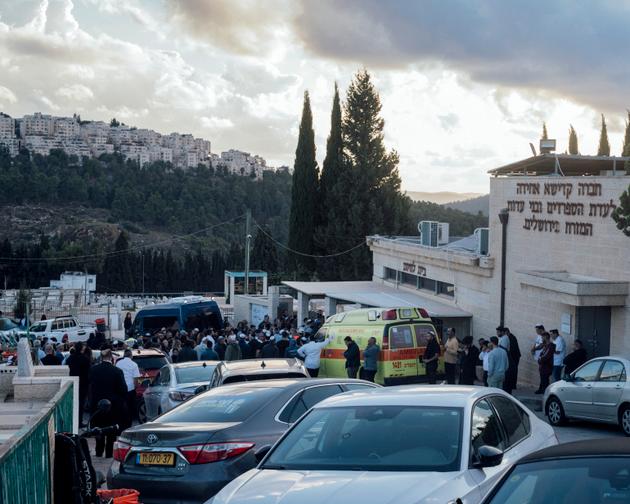


'The magnitude is terrible': The grim task of identifying burned Israeli bodies
FeatureOf the 950 civilian corpses sent to the National Center for Forensic Medicine, nearly 400 were still unidentified on Monday afternoon. Forensic anthropologists stressed the difficulty of their task and described burned and tortured bodies.
On Sunday, October 15, in the afternoon light, a father's voice trembled in the middle of the Givat Shaul cemetery in Jerusalem. He was speaking one last time to his son, Idan, who died in the Hamas terrorist attack on October 7. "After eight days, at last, you can rest in peace." Several hundred relatives listened to the prayer and the song of his older sister. They then accompanied the 25-year-old to his grave in the hills of the Holy City. "We got the call yesterday. After Shabbat. And our lives changed forever," said Idan's brother, tearfully.

Families dreaded the call from the authorities, many of them having counted their loved ones among the missing. It was a long time coming. Either the bodies had only recently been found, or they were so badly damaged they were difficult to identify.
The latest death toll is 1,400 from Hamas's attack on October 7, which provoked an airstrike from Israel that killed more than 2,750 people in the Gaza Strip. Since October 7, Israel has been burying its dead, every day, by the dozens and dozens in the country's cemeteries. "I'm on my fourth funeral, including one of my best friends," said Yovel R., 25, a student in Tel Aviv. The small size of the country means that many Israelis have gone to two, three, sometimes even five 10 ten ceremonies over the past week.
Funeral services were initially overwhelmed by the number of bodies to be taken care of. So much so that ZAKA, a voluntary emergency response team in Israel, launched an appeal for donations. "Our teams are searching the fields around the kibbutzim and continue to find the bodies of those who tried to flee," said Mendi Habib, one of the organization's executives in the center of the country. "We transport them in trucks that can hold up to 50 bodies."

Many of the remains were too badly damaged to verify their identity. These bodies were first stored at the Shura military base before being transferred to a forensic identification center in Tel Aviv.
A colossal task
The smell was unbearable in the backyard of this center, which Le Monde visited, even in the open air. Some 15 corpses were in black plastic bags and placed on stretchers. They were waiting to be taken outside. Some of the smaller bags contained parts of human remains, salvaged from the many houses set on fire in the kibbutzim attacked near the Gaza Strip.
Technicians, accompanied by religious personnel, tended to the extremely damaged corpses. Several had been completely burned. A head was even more disfigured – as if it had burst.
You have 63.22% of this article left to read. The rest is for subscribers only.
